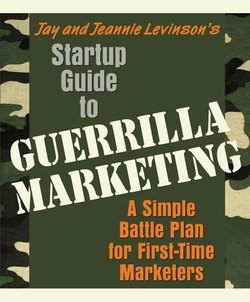Читать книгу Startup Guide to Guerrilla Marketing - Jay Levinson Conrad - Страница 36
На сайте Литреса книга снята с продажи.
Your Presentation
ОглавлениеWhen making your presentation, keep in mind that you are not talking by accident. You are there because of intent on your part. If your prospect is still with you, there is intent on his or her part, too. And the intent is to buy.
Either you will buy a story about why a sale cannot be made, or your prospect will buy what you’re selling. It truly is up to you. And don’t forget: People do enjoy being sold to. They do not like being pressured. They do like being persuaded by honest enthusiasm to buy.
The following are some tips to make your presentations flow smoothly and some ways to evaluate your technique.
• List all the benefits of doing business with you, one by one. The more benefits a prospect knows about, the more likely a prospect will buy. When compiling your list of benefits, invite your employees and at least one customer. Customers are tuned in to benefits you offer that you may take for granted.
• Emphasize the unique advantages of buying from you. You should be able to rattle these off with the same aplomb you can state your own name and address. It is upon these competitive advantages that you should be basing your marketing. Don’t knock your competition whatever you do.
• Stress the advantages of your type of offering, then of your specific offering, especially if your prospect has no experience with what you are selling. If you’re selling security devices, talk of the value of owning them, then of the value of owning yours.
• Tailor your presentation. Do your homework and find out what there is to know about your contact. Then take that information and customize it into your presentation.
• Mention the acceptance of your products or services by others—especially people in their community. People do not like to be pioneers. People know darned well that pioneers get arrows in the back of their necks. If you can mention names and be specific, by all means do so. The more specific you are, the more closes you’ll make. But don’t be tedious. You can’t bore a prospect into buying.
• Know enough about your prospect so you can present your product or service from his or her point of view. This ability will increase your number of closes dramatically. Emphasize what all of your product or service benefits can do for your prospect, not what they can do for the general population.
• Keep an eagle eye on your prospect’s eyes, teeth, and hands. If the prospect is looking around, rather than at you, you’ve got to say something to regain attention. If your prospect is not smiling, you are being too serious. Say something to earn a smile. Best of all, smile yourself. That will get your prospect to smile. If your prospect is wringing his or her hands, your prospect is bored. Say something to ease the boredom and spark more interest.
• So show as much as you can: photos, drawings, a circular, a product, your sales video, anything. A sales point made to the eye is 78 percent more effective than one made to the ear. Just be sure it relates to your presentation.
• Sell the benefit along with the feature. If the feature is solar power, for instance, the benefit is economy. If the feature is new computer software, the benefit is probably speed, power, or profitability.
• Mention your past successes, so the prospect will feel that the key to success is in your hands and there is little chance of a ripoff.
• Be proud. Take pride in your prices, benefits, and offering. Convey your pride with facial expressions, tone of voice, and selection of words. Feel the pride and let it come shining through.
• Remain convinced that your prospect will buy from you throughout your presentation. This optimism will be sensed by the prospect and can positively affect the close.
There are 250,000 commonly used words in the English language; there are 600,000 nonverbal methods of communications: stance, facial expression, hand gestures, eyebrow position and 599,996 others. Learn them and utilize them. They’re completely free, a perfect example of pure guerrilla marketing. No cost, high payoff.
There are 250,000 commonly used words in the English language; there are 600,000 nonverbal methods of communications: stance, facial expression, hand gestures, eyebrow position, and 599,996 others.
